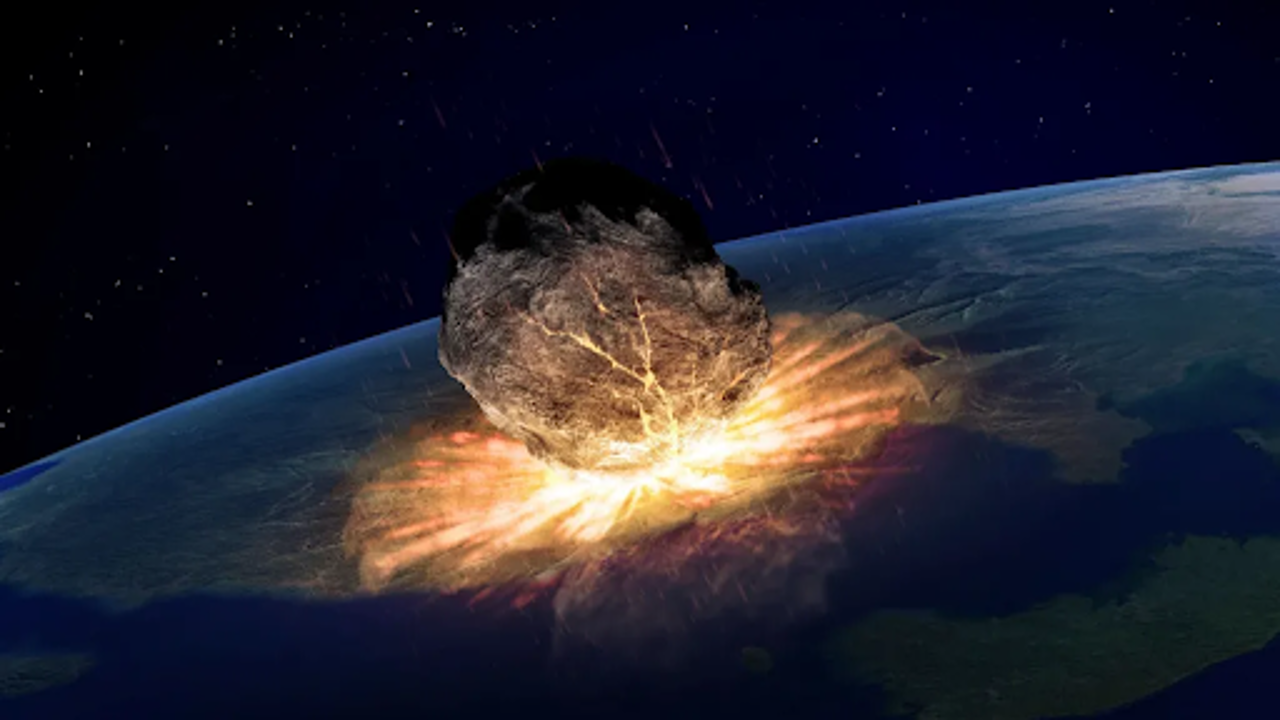
The meteorite measured between 40 and 60 kilometres wide and created a crater that was 500 kilometres in diameter. BBC
A monumental discovery has revealed that a massive meteorite, first identified in 2014, triggered a tsunami larger than any known in human history and boiled the Earth’s oceans. This enormous space rock, dubbed S2, was 200 times the size of the meteorite that is believed to have caused the extinction of the dinosaurs. It struck our planet about three billion years ago, during its early developmental stages.
Scientists, eager to uncover the details of this catastrophic event, embarked on an expedition to the impact site located in South Africa. Armed with sledgehammers, they trekked into the rugged terrain of the Eastern Barberton Greenstone Belt to collect rock samples. Their mission was to gain insights into the collision and its effects on early Earth.
Prof. Nadja Drabon from Harvard University, the lead author of the study, explained, “After Earth first formed, there was a lot of debris flying around in space that would be smashing into our planet.” Remarkably, her research shows that life was exceptionally resilient following such colossal impacts. “We found that life actually bloomed and thrived,” she added.
The team was accompanied by rangers to keep them safe from wild animals such as elephants and rhinos. BBC
The S2 meteorite was significantly larger than most space rocks that have impacted Earth. For reference, the dinosaur-killing meteorite was approximately 10 kilometres wide, while S2 measured between 40 and 60 kilometres across, making it 50 to 200 times more massive. At the time of its impact, Earth was mostly covered in water, with only a few landmasses. Life was primarily composed of simple, single-celled microorganisms.
To gather data on the impact, Prof. Drabon and her team undertook several trips to the Eastern Barberton Greenstone Belt, which is known for housing some of the oldest meteorite remnants on the planet. They drove as far as they could into the remote mountains before continuing on foot with heavy backpacks. Accompanied by armed rangers to protect them from wildlife, including elephants and rhinos, they set out to find tiny fragments of rock known as spherules left behind from the impact.
The scientists collected hundreds of kilograms of rock samples and transported them back to their laboratories for further analysis. “I usually get stopped by security, but I give them a big spiel about how exciting the science is, and they get really bored and let me through,” Prof. Drabon joked about her travels.
Nadja and her team travelled to the Eastern Barberton Greenstone Belt in South Africa to gather rock samples. BBC
The research team successfully reconstructed the chaos that ensued when the S2 meteorite collided with Earth. The impact created a massive 500-kilometre-wide crater and sent rocks flying at incredible speeds, forming a global cloud of debris. “Imagine a rain cloud, but instead of water droplets, it’s like molten rock raining from the sky,” Prof. Drabon described.
The resulting tsunami would have swept across the planet, tearing up the seafloor and inundating coastlines. According to Prof. Drabon, the force of this impact would dwarf the infamous 2004 Indian Ocean tsunami. The energy generated would have created intense heat, boiling the oceans and causing extensive evaporation. Air temperatures could have soared by up to 100 degrees Celsius, shrouding the Earth in darkness as dust and particles blocked sunlight. This lack of sunlight would have devastated photosynthetic life.
The group of geologists examined rocks that showed signs of a disturbed seabed. BBC
However, the findings took an unexpected turn. The rock evidence indicated that the violent disturbances from the impact actually churned up essential nutrients like phosphorus and iron, nourishing early organisms. “Life was not only resilient but bounced back quickly and thrived,” said Prof. Drabon. The aftermath of such cataclysmic events seemingly provided favourable conditions for early life, allowing it to flourish in the wake of destruction.
The study suggests that massive meteorite impacts, often perceived as solely destructive, may have played a crucial role in fostering the conditions necessary for early life to thrive on Earth. Prof. Drabon concludes, “It seems that life after the impact encountered really favourable conditions that allowed it to bloom.”















